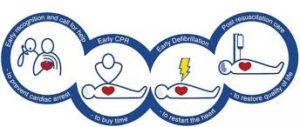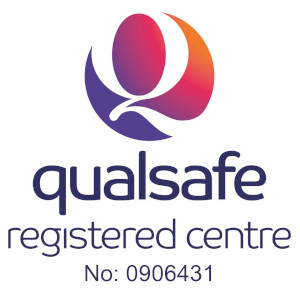Every second counts in emergency situations when someone’s life is on the line. This is why having knowledge of what you need to know before giving CPR can help someone who is breathing or not.
Being prepared and equipped with the right knowledge can help you to become a crucial source of assistance during emergencies. In this blog, we will explore essential information that everyone should be aware of, enabling you to confidently take life-saving action when the need arises.
Whether you’re a concerned individual, a parent, a caregiver, or simply a responsible member of your community, understanding emergency response protocols is paramount. By familiarising yourself with key principles, guidelines, and considerations, you can play a vital role in providing immediate assistance until professional help arrives.
It’s important to note that while this blog aims to provide valuable insights, it is not a substitute for formal training or certification. However, booking a course with us is highly recommended to develop the necessary skills and expertise in emergency response.
Did you know?
- NHS Ambulance Services attempt resuscitation in approximately 30,000 people each year.
- The annual incidence of out-of-hospital cardiac arrest (OHCA) is approximately 55 per 100,000 inhabitants.
- Most cardiac arrests (72%) occur in the home or a workplace (15%).
- Half of all Out of Hospital Cardiac Arrests are witnessed by a bystander.
- Most cardiac arrests occur in adults (98%), amongst whom one third (33%) were aged 15-64 years.
- Bystander CPR is attempted in 7 out of 10 Out of Hospital Cardiac Arrests
- The average ambulance response time is 6.9 minutes.
- In 2018, 59% of members of the public reported having received training in CPR and 19% in how to use an automated external defibrillator (AED).
These statistics were taken from the European Resuscitation Council Guidelines cover the epidemiology and outcomes of cardiac arrest across Europe. This section presents equivalent data drawn from UK studies of the epidemiology of cardiac arrest in the in-hospital and out of hospital settings. Now we know about the statistics in helping someone on survival rates, lets learn what you need to know before giving CPR.
What You Need to Know Before Giving CPR
When faced with a life-threatening situation, the ability to act quickly and confidently can be the difference between life and death. Cardiopulmonary Resuscitation (CPR) is a crucial emergency procedure that can help sustain a person’s life until professional medical help arrives. However, before jumping into administering CPR, there are several important steps to consider that can greatly impact its effectiveness.
There are essential preparations and actions that need to be taken before initiating CPR. Understanding these crucial steps is vital for ensuring the safety of both the responder and the individual in need. By familiarising yourself with the necessary preparations, you can approach an emergency situation with confidence and provide the best possible care.
From assessing the scene to confirming the need for CPR, we’ll cover the key considerations that will help you make informed decisions and respond effectively. Remember, while this blog provides valuable information, it is not a substitute for formal CPR training. Seeking professional training and certification is strongly advised to develop the necessary skills and proficiency in performing CPR. Click here to get more information on how to learn CPR with us.
The 7 Steps of CPR
Lets tell you what you need to know before giving CPR. The seven steps before CPR are as follows;
- Dangers – check the area of any dangers and make the area safe
- Response – Check if the casualty is responsive or unresponsive. As you approach them, talk to the casualty, introduce yourself and ask them questions to see if you can get a response. Kneel next to their chest and gently shake or tap their shoulders, asking, ‘What has happened?’, ‘Open your eyes!’.
- If the casualty opens their eyes, or gives another gesture, they are responsive.
- If they do not respond to you in any way they are unresponsive and should be treated as quickly as possible
- Shout – If the casualty is not responsive, in poor circulation or you feel you need extra support, shout for help to get extra assistance.
- Airway – You need to check that the airway is open and clear. Open the airway by placing one hand on the forehead to tilt the head back and use two fingers from the other hand to lift the chin.
- If they are unresponsive, you need to move on to breathing as quickly as possible
- Breathing – You now need to check if the casualty is breathing normally. Place your ear above their mouth, looking down their body. Listen for sounds of breathing and see if you can feel their breath on your cheek. Watch to see if their chest moves. Do this for 10 seconds.
- If they are unresponsive and not breathing, you need to call 999/112 for emergency help and start CPR straight away. Ask a helper to find and bring a defibrillator (AED).
- If they are responsive and breathing move on to circulation.
- Circulation. Once you have established they are breathing, look and check for any signs of severe bleeding.
-
- If they are bleeding severely you will need to control and treat the bleeding by applying direct pressure to the wound. Call 999/112 for emergency help.
- If they are unresponsive and breathing but with no bleeding, put them in the recovery position and call 999/112 for emergency help.
-
- Defibrillation – If CPR is needed and there are other people around, someone will start CPR and another will run to get the defibrillator. While on the phone, 999 will instruct where the nearest Defibrillator is and the code to get into the box if there is a keycode.
Chance of Survival – what you need to know before giving CPR
The Chain of Survival describes a sequence of steps that together maximise the chance of survival following cardiac arrest.
Did you know?
- Defibrillation within 3–5 minutes of collapse can produce survival rates up to 50–74%.
- Each minute of delay reduces the probability of survival to hospital discharge by 10%.
- Fewer than 2% of people have an automated external defibrillator (AED) deployed before the ambulance arrives.

- The first link in the chain is the immediate recognition of cardiac arrest and calling for help.
- The second is the prompt initiation of CPR.
- The third is performing defibrillation as soon as possible.
- The fourth is optimal post resuscitation care.
Like any chain, it is only as strong as its weakest link. If one stage is weak, the chances of successful resuscitation are compromised.
Why book your Training with HMB Training Services Ltd
How can HMB Training Services help you? HMB Training Services was created in August 2016 by founder and director Heather Marie Bird. Heather has worked at large companies such as Cat Finning and A-Plant as well as smaller companies and schools.
HMB Training Services can help you with the following:
- Emergency First Aid
- First Aid at Work
- Re-qualifying First Aid
- Annual First Aid refreshers
- Health & Safety
- Manual Handling
- Fire Awareness
- Fire Marshall
- Mental Health First Aid
We can help manage your certifications by reminding you when renewals become due so that you don’t have to keep track of everyone’s individual renewal dates.
We can offer times to suit your business needs and can visit your company to train groups of four or more people. Our training sessions are adaptive to the audience and we can arrange to include any additional modules that may be considered relevant for your particular business.
What we Train
All of our courses are tailored for the group of learners in a fun and friendly way. We consider your start and end times to adapt to your staff schedule. We can add any specifics from your polices, systems of work or previous accidents and risk assessments amendments. On our courses we can add any extra modules or certain previous accidents or near misses. The first aid courses can be adapted to include an element of health and safety. You are really getting a lot for your money and time taking courses with HMB Training Services. Lets teach you what you need to know before giving CPR.
Emergency First Aid at work;
The Emergency First Aid at Work course is a vital training designed to equip individuals with the necessary skills to handle emergency situations in the workplace. This course provides participants with the knowledge and confidence to effectively respond to injuries, illnesses, and accidents that may occur on-site. Covering topics such as assessing and managing incidents, CPR, choking, bleeding control, and more. The Emergency First Aid at Work course ensures that attendees are prepared to provide immediate and appropriate assistance until professional medical help arrives. This comprehensive training is essential for creating a safe and prepared work environment, where employees can confidently handle emergencies and potentially save lives.
First Aid at Work;
The First Aid at Work course is a comprehensive training course designed to provide individuals with the knowledge and skills necessary to effectively respond to a wide range of medical emergencies in the workplace. This course goes beyond basic first aid training and covers topics such as assessing and managing incidents, CPR and AED usage, treating various injuries and illnesses, dealing with trauma, and more. Participants will learn how to handle emergency situations calmly and efficiently, ensuring the well-being of their colleagues and reducing the risk of further harm. The First Aid at Work course is essential for designated workplace first aiders, supervisors, and anyone responsible for the health and safety of employees. By completing this course, individuals can play a crucial role in promoting a safe and prepared work environment, where prompt and effective first aid can make a significant difference in saving lives and minimising the impact of injuries or illnesses.
Why is it vital to know how to administer First Aid Courses in West Midlands?
- Reduce accidents and injuries in your workplace
- Quick reaction and speed in administrating first aid will help save lives
- Reduce the number of incidents by sufficient trained first aiders
- Become more confident and knowledgeable in treating someone
- Increases safety within the workplace; having first aid training promotes a sense of safety and well-being
- Reduce the cost to the employer; reduce staff absences and fines from HSE
- First aid Training is a form of team-building activity
If you are looking for first aid training courses click here
Additionally, please do call us on 01543 453338 to see how we can help with delivering group training courses.



